The Cry of Relatives Outside the Prison
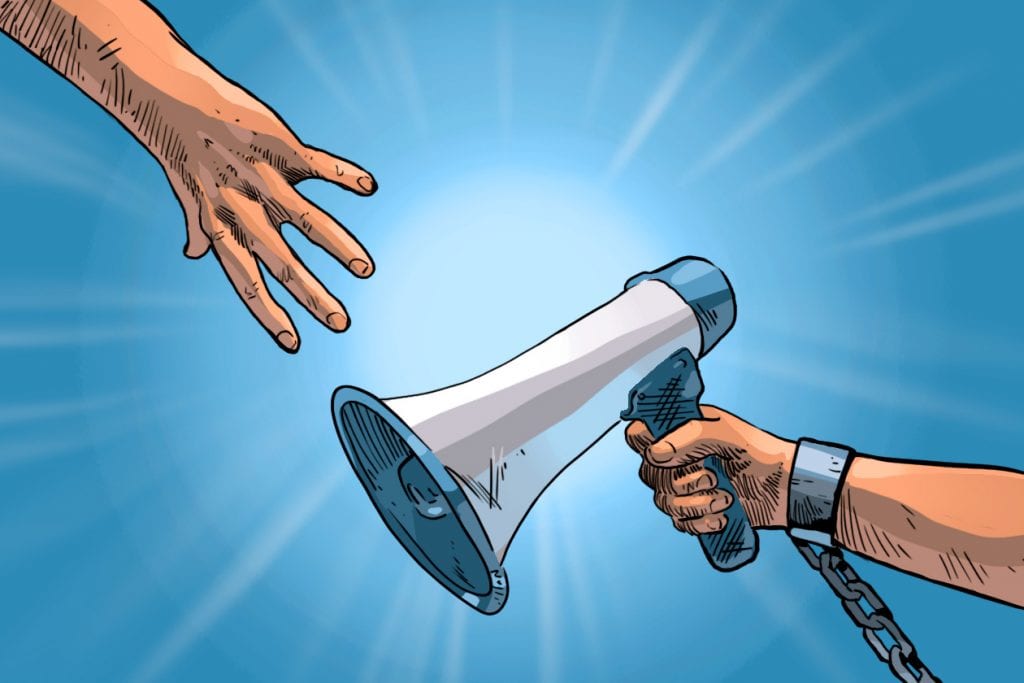
Dozens of university students have been captured for their leadership in the protests, but their voices resound in the streets thanks to their relatives
By Franklin Villavicencio (Confidencial)
HAVANA TIMES – Mercedes Davila does not like to speak in public. But since September 6th—the day the National Police presented her son, Edwin Carcache Davila, accused of “terrorism”—she has led protests, as he used to do.
When Davila takes to the streets, she wears a blue and white [the colors of the Nicaraguan flag] hat similar to the one her son used, and she does not separate from the sound truck. Carcache also used to do it and was known as “the boy in the little hat,” the one who enlivened the marches yelling slogans.
“I am not interested in politics at all. My son always told me to stay out of this, because I do not have any political interests. But seeing that he made himself be loved and admired, and that they have him behind bars for crimes he has not committed, I get encouragement to go out into the streets,” this mother says through tears.
Davila is seen as a strong woman in the streets, but when she takes off her hat she breaks down. She cries brokenheartedly every time she talks about her role in recent weeks. If Carcache were not in prison, she would not be in the public stage today, as the young communicator used to tell her to keep a low profile. She also replied to him noting the dangers that his activism against the Ortega regime could bring to him. She even got him a visa and bought him a ticket to Costa Rica, but her son did not accept it.
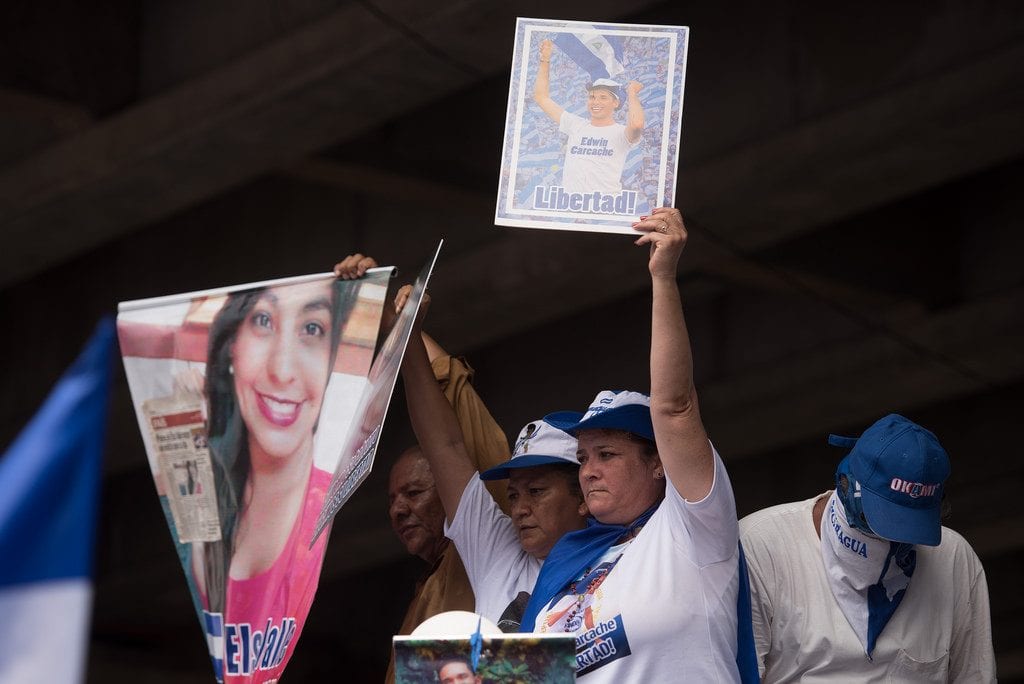
“He would tell me: ‘mom, how can I leave my friends behind, if I have seen their suffering? We cannot do that, mother. You make me feel bad, if I leave and they stay here.’ He never stopped going into the streets, he always went out for them,” says Mercedes.
And now, she has decided not to leave the streets for her son. On September 9th, relatives of political prisoners called for a demonstration to demand the release of those arrested by the National Police in the context of the protests. The demonstration that started from the Cristo Rey traffic circle and was besieged from the beginning by riot police was led by Mercedes Davila and Carlos Valle, who, from the moment their children were kidnapped, decided to raise their voices.
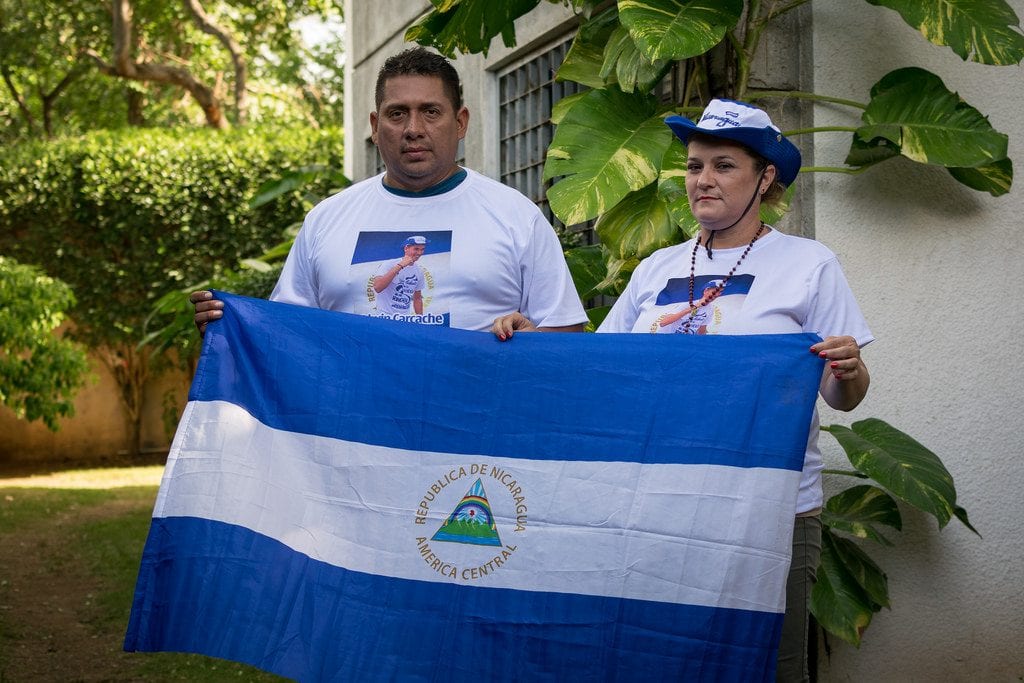
“If our prisoners continue their struggle inside (the prisons), we have to follow it outside. On behalf of my son Edwin Carcache who enjoyed the streets, you will have me and hundreds of Nicaraguans in the streets,” she told a news conference with other relatives of political prisoners on the day before the event.
The following day, she took to the streets, grabbed a microphone and began to cry out her son’s name and to shout slogans: Edwin, friend, the people are with you” From that moment on, the media cameras focused on her and the struggle for the release of political prisoners had a new voice and a new face.
Two days after his arrest, Edwin Carcache Davila was presented by the National Police as the “leader of a terrorist group.” He along with Jefferson Padilla, Carlos Lacayo, Jonathan Lacayo and Oscar Rosales face legal proceedings for a string of crimes: from terrorism to attempted murder.
“I want the world to know that my son is in prison and that he is innocent,” expressed Mercedes Davila.
The pilgrimage of Carlos Valle
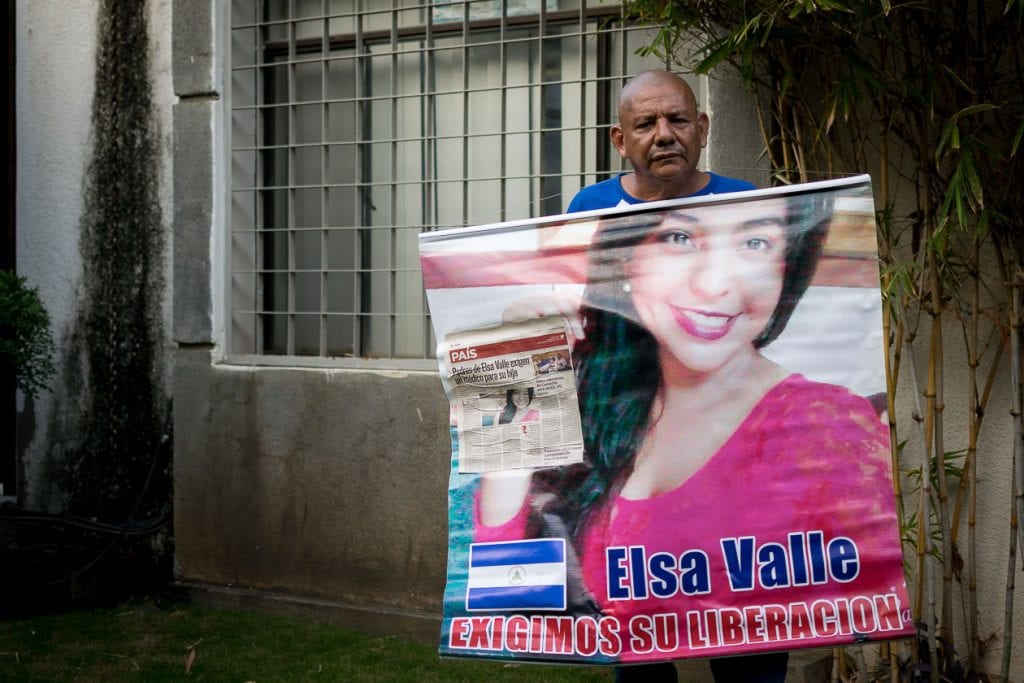
Before being arrested, Carlos Valle had started a “pilgrimage” in the streets of Managua for the release of his daughter, Elsa Valle, apprehended on July 14th in the sector of the Polytechnic University of Nicaragua (UPOLI) and released 75 days later by the National Police.
Wherever he went, he always carried a poster with the image of his daughter. “When I began this fight to free Elsa, my purpose was to put a name to the struggle and I told myself that it was my pilgrimage. I started from July 14th, when she was apprehended,” said Carlos Valle in an interview with Niu days before the Police accused him as a “terrorist” after he hit a man on a motorcycle that insulted “self-convoked” protesters in a civic march.
The “pilgrimage” of Carlos Valle consisted not only in carrying the portrait of his daughter every time there was a civic demonstration, but also in facing the national and international media. “I have identified myself in social networks as a pilgrim,” he stated.
“I have no interest to figure. I have seen people who come, ask me for hugs and that embarrasses me. I have told myself that I want to exhaust all the ways to free Elsa,” he added in what would be his last interview with the media, before he was captured by riot-police.
He wasn’t there on the day Elsa Valle was released from “La Esperanza” prison. Days before he was arrested in the sector of the Roberto Huembes market, after a march that was attacked by the police ended. The video of his kidnapping went viral on social networks and caused repudiation among Nicaraguans. Valle was jerked by policemen when they threw him into the back of a pick-up truck, leaving behind the poster of Elsa that he carried in every demonstration.

The roles changed for this family. On September 27th, Elsa Valle was released from “La Esperanza” prison. Her father had already been in prison for eleven days. With her fractured ankle, the 19 years-old young woman crossed the door of the women’s prison with her raised fist and exclaimed: “Yes, it could be done!”
But she asserted that her struggle would not end there. Now she is the one that carries the face of her father and brings him food at the Judicial Assistance Directorate, known as “El Chipote.”
“When I left (prison) I told myself that I was going to take up the role he (Carlos Valle) played towards me, but I didn’t know that the repression would increase. Even with the threats and all that, I will always continue fighting. Not in the streets like he did. My way of protesting is to wear a T-shirt with his face daily to demand his freedom,” commented this young woman a month after the arrest of her father, whose trial, as of yet, still does not have a starting date.
Jennifer Estrada’s fight on social networks
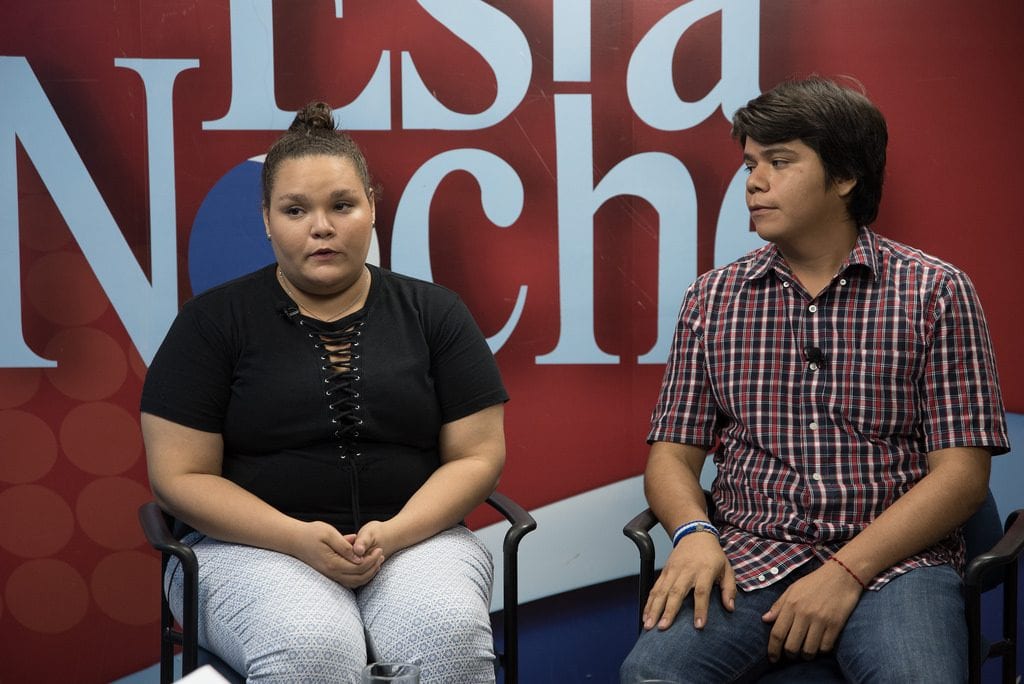
Jennifer Estrada does not stop counting the hours that her brother is in prison. Daily she dedicates at least a tweet to show that Byron Estrada has more than a thousand hours of being accused of terrorism and of burning the University Center of the National University (CUUN) in Leon.
“I have achieved that people wear a portrait of my brother. It has been in Spain, in public restrooms of a cinema, on car stickers, in banners and in publicity blankets. Yes, he is visible and his name is heard and I believe that it is the result of the fight I took upon myself since August 25,” commented Jennifer.
On that day a massive raid happened in several departments of the country. At least twelve people were arrested in Leon on the afternoon of August 25, among them the student leaders Christopher Nayrobi Olivas, Luis Quiroz, Yaritza Mairena, Victoria Obando and Levis Rugama.

Since then, Jennifer began a campaign on social networks in order to present the face of her brother and all the other political prisoners of the government of Daniel Ortega.
“Every day in the morning I receive messages that people send me where the faces of Byron, of Nayrobi and the other boys are. Every day I check what people send us and in that way I realize from where they are demanding their freedom,” she added.
Byron Estrada became involved in the protests on April 18th, when in Leon senior citizens and university students were beaten when they protested against the social security reforms imposed by President Daniel Ortega. As the repression increased, the young student of dentistry at UNAN-Leon became involved in the civic struggle and acted as spokesperson of the April 19th Student Movement in the city.
When the preliminary hearing for the youths from Leon began, on social networks a photograph went viral in which they appear smiling at the camera. She shared it on Twitter. “When I saw that photo I said to myself this is the story I want people to know, that was the image that I wanted the world to see of them; two college kids who are fighting from inside (prison) and who are innocent,” she declared.
“I want people to see what these kids are really like, what dreamers they are and that all they want is a free Nicaragua.” And that is precisely what has led Jennifer Estrada to disseminate the face of her brother through the barricades of social networks.





